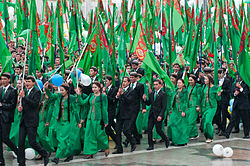This article includes a list of general references, but it lacks sufficient corresponding inline citations .(May 2013) |

Public Holidays in Turkmenistan are laid out in the Constitution of Turkmenistan, which acts as a list of nationally recognized public holidays in the country.